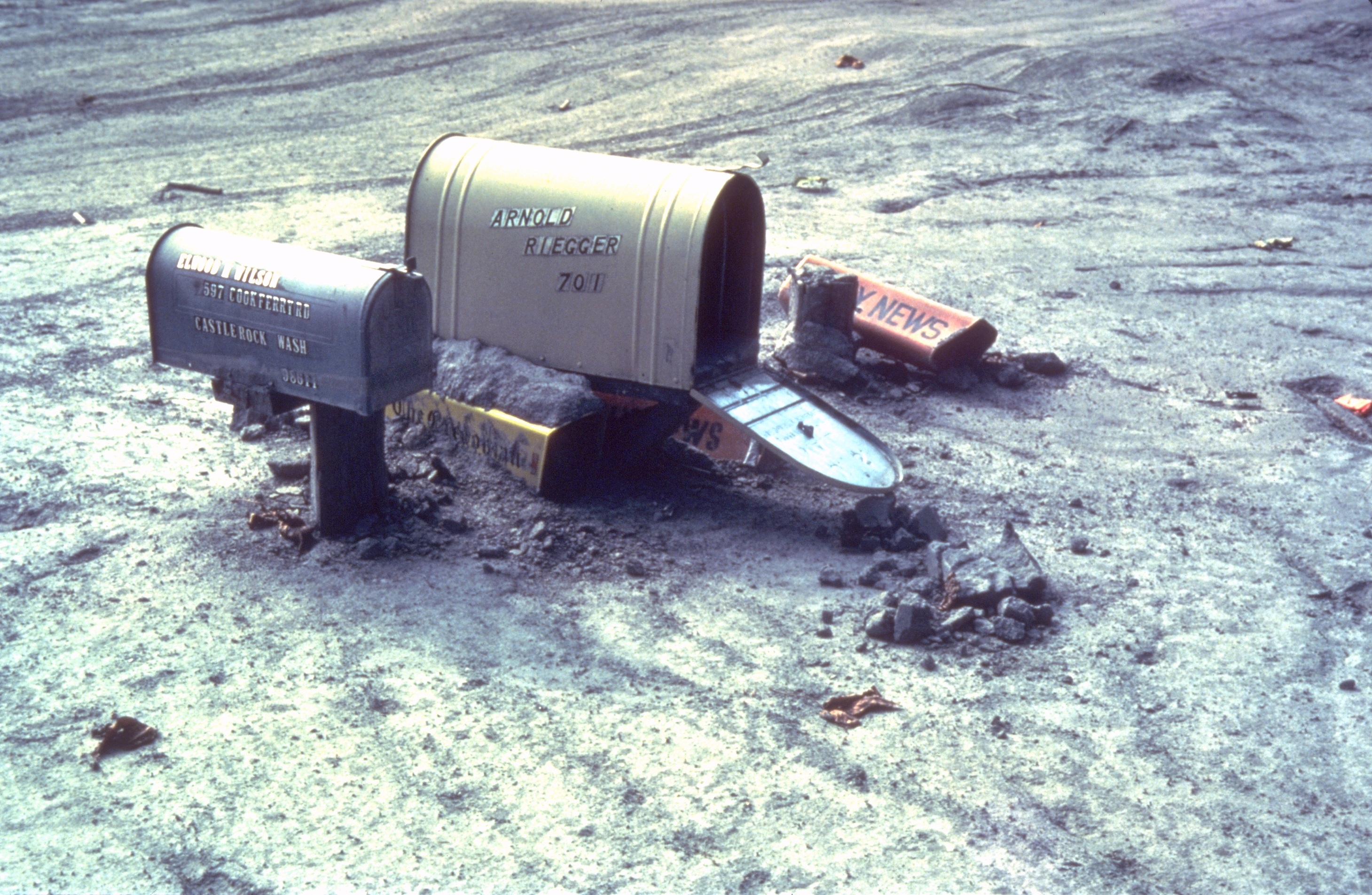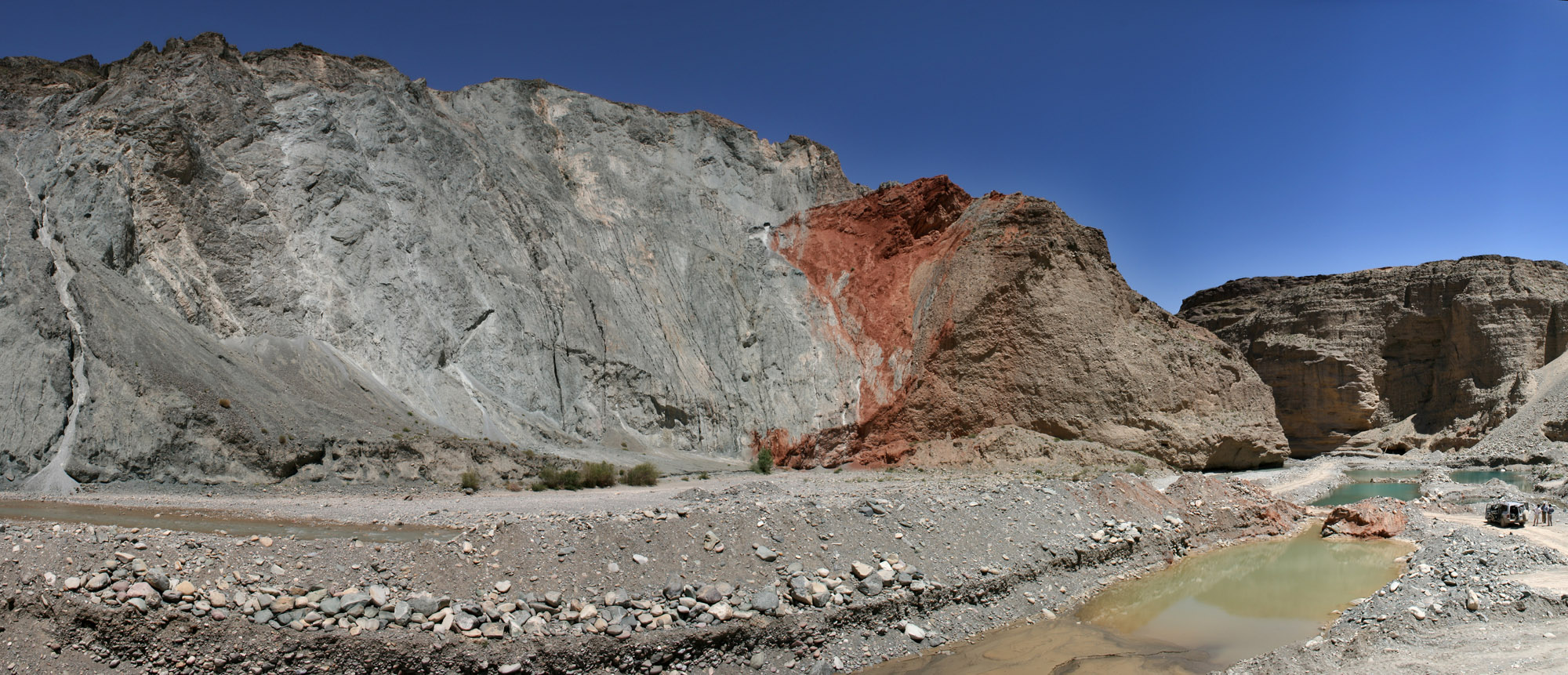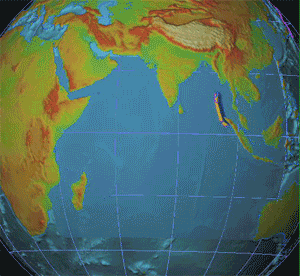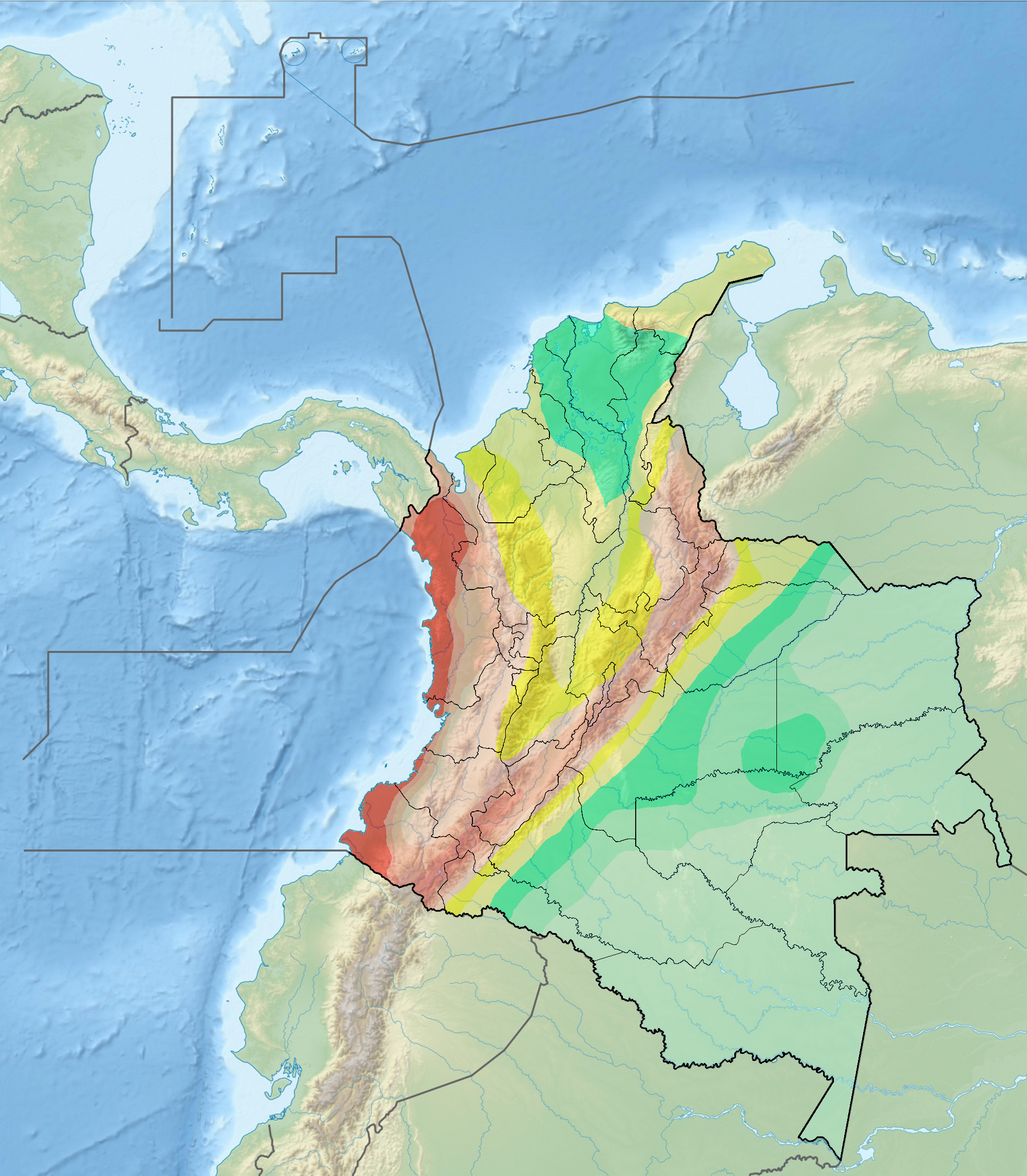|
Murrí Fault
The Murrí Fault ( es, Falla Murrí) is an oblique thrust fault in the department of Antioquia in northwestern Colombia. The fault has a total length of and runs along an average north-south strike of 001.4 ± 5 along the Central Ranges of the Colombian Andes. Etymology The fault is named after the Murrí River in Antioquia.Paris et al., 2000, p.17 Description Located in the western limb of the Western Ranges of the Colombian Andes. The fault puts Cretaceous mafic igneous rocks to the east in contact with Tertiary marine sedimentary rocks to the west. The fault cuts mud flows dated at about 10,000 to 15,000 years. It causes strong lineaments and offsets terraces and alluvial deposits. The fault forms well-developed scarps of about high on late Quaternary alluvial deposits. The fault forms the course of the Penderisco River and cuts perpendicular to the Ocaidó Valley.Plancha 145, 2002 Some authors consider the fault the southern part of the Murrí-Mutatá Fault.Plancha ... [...More Info...] [...Related Items...] OR: [Wikipedia] [Google] [Baidu] |
Murrí River
The Murrí River is a river of Colombia. It drains into the Caribbean Sea via the Atrato River. See also *List of rivers of Colombia Atlantic Ocean Amazon River Basin * Amazon River ** Guainía River or Negro River *** Vaupés River or Uaupés River **** Papuri River **** Querary River *** Isana River or Içana River **** Cuiari River *** Aquio River ** Caquetá River o ... References *Rand McNally, The New International Atlas, 1993. Rivers of Colombia {{Colombia-river-stub ... [...More Info...] [...Related Items...] OR: [Wikipedia] [Google] [Baidu] |
Mud Flow
A mudflow or mud flow is a form of mass wasting involving fast-moving flow of debris that has become liquified by the addition of water. Such flows can move at speeds ranging from 3 meters/minute to 5 meters/second. Mudflows contain a significant proportion of clay, which makes them more fluid than debris flows, allowing them to travel farther and across lower slope angles. Both types of flow are generally mixtures of particles with a wide range of sizes, which typically become sorted by size upon deposition. Mudflows are often called mudslides, a term applied indiscriminately by the mass media to a variety of mass wasting events. Mudflows often start as slides, becoming flows as water is entrained along the flow path; such events are often called flow slides. Other types of mudflows include lahars (involving fine-grained pyroclastic deposits on the flanks of volcanoes) and jökulhlaups (outbursts from under glaciers or icecaps). A statutory definition of "flood-related mudsli ... [...More Info...] [...Related Items...] OR: [Wikipedia] [Google] [Baidu] |
Strike-slip Faults
In geology, a fault is a planar fracture or discontinuity in a volume of rock across which there has been significant displacement as a result of rock-mass movements. Large faults within Earth's crust result from the action of plate tectonic forces, with the largest forming the boundaries between the plates, such as the megathrust faults of subduction zones or transform faults. Energy release associated with rapid movement on active faults is the cause of most earthquakes. Faults may also displace slowly, by aseismic creep. A ''fault plane'' is the plane that represents the fracture surface of a fault. A '' fault trace'' or ''fault line'' is a place where the fault can be seen or mapped on the surface. A fault trace is also the line commonly plotted on geologic maps to represent a fault. A ''fault zone'' is a cluster of parallel faults. However, the term is also used for the zone of crushed rock along a single fault. Prolonged motion along closely spaced faults can bl ... [...More Info...] [...Related Items...] OR: [Wikipedia] [Google] [Baidu] |
Thrust Faults
A thrust fault is a break in the Earth's crust, across which older rocks are pushed above younger rocks. Thrust geometry and nomenclature Reverse faults A thrust fault is a type of reverse fault that has a dip of 45 degrees or less. If the angle of the fault plane is lower (often less than 15 degrees from the horizontal) and the displacement of the overlying block is large (often in the kilometer range) the fault is called an ''overthrust'' or ''overthrust fault''. Erosion can remove part of the overlying block, creating a ''fenster'' (or ''window'') – when the underlying block is exposed only in a relatively small area. When erosion removes most of the overlying block, leaving island-like remnants resting on the lower block, the remnants are called ''klippen'' (singular ''klippe''). Blind thrust faults If the fault plane terminates before it reaches the Earth's surface, it is referred to as a ''blind thrust'' fault. Because of the lack of surface evidence, blind thr ... [...More Info...] [...Related Items...] OR: [Wikipedia] [Google] [Baidu] |
Seismic Faults Of Colombia
Seismology (; from Ancient Greek σεισμός (''seismós'') meaning " earthquake" and -λογία (''-logía'') meaning "study of") is the scientific study of earthquakes and the propagation of elastic waves through the Earth or through other planet-like bodies. It also includes studies of earthquake environmental effects such as tsunamis as well as diverse seismic sources such as volcanic, tectonic, glacial, fluvial, oceanic, atmospheric, and artificial processes such as explosions. A related field that uses geology to infer information regarding past earthquakes is paleoseismology. A recording of Earth motion as a function of time is called a seismogram. A seismologist is a scientist who does research in seismology. History Scholarly interest in earthquakes can be traced back to antiquity. Early speculations on the natural causes of earthquakes were included in the writings of Thales of Miletus (c. 585 BCE), Anaximenes of Miletus (c. 550 BCE), Aristotle (c. 340 ... [...More Info...] [...Related Items...] OR: [Wikipedia] [Google] [Baidu] |
United States Geological Survey
The United States Geological Survey (USGS), formerly simply known as the Geological Survey, is a scientific agency of the United States government. The scientists of the USGS study the landscape of the United States, its natural resources, and the natural hazards that threaten it. The organization's work spans the disciplines of biology, geography, geology, and hydrology. The USGS is a fact-finding research organization with no regulatory responsibility. The agency was founded on March 3, 1879. The USGS is a bureau of the United States Department of the Interior; it is that department's sole scientific agency. The USGS employs approximately 8,670 people and is headquartered in Reston, Virginia. The USGS also has major offices near Lakewood, Colorado, at the Denver Federal Center, and Menlo Park, California. The current motto of the USGS, in use since August 1997, is "science for a changing world". The agency's previous slogan, adopted on the occasion of its hundredth an ... [...More Info...] [...Related Items...] OR: [Wikipedia] [Google] [Baidu] |
INGEOMINAS
The Colombian Geological Survey (CGS) ( es, Servicio Geológico Colombiano; formerly known as INGEOMINAS) is a scientific agency of the Colombian government in charge of contributing to the socioeconomic development of the nation through research in basic and applied geosciences of the subsoil, the potential of its resources, evaluating and monitoring threats of geological origin, managing the geoscientific knowledge of the nation, and studying the nuclear and radioactive elements in Colombia. History The CGS was initially created as the ''National Scientific Commission'' ( es, Comisión Científica Nacional) by the Congress of Colombia on December 22, in 1916, with the mission of mapping the geological resources of the nation and exploring the national territory in search of mineral deposits. Following a series of earthquakes throughout the nation in the early 1920s, the eruption of the Galeras volcano in 1925, and the growing mining and petroleum industry, the Colombian gove ... [...More Info...] [...Related Items...] OR: [Wikipedia] [Google] [Baidu] |
Romeral Fault System
The Romeral Fault System ( es, Sistema de Fallas (de) Romeral) is a megaregional system of major parallel and anastomosing faults in the Central Ranges of the Colombian Andes and the Cauca, Amagá, and Sinú-San Jacinto Basins. The system spans across ten departments of Colombia, from northeast to south Bolívar, Sucre, Córdoba, Antioquia, Caldas, Risaralda, Quindío, Valle del Cauca, Cauca and Nariño. The fault zone extends into Ecuador where it is known as the Peltetec Fault System. The in detail described part of the Romeral Fault System south of Córdoba has a total length of with a cumulative length of and runs along an average north to south strike of 017.6 ± 16, cross-cutting the central-western portion of Colombia. The fault system, active during more than 200 million years from the Triassic to recent, represents the ancient western continental margin of northwestern South America and forms the boundary between obducted oceanic crust to the west of the f ... [...More Info...] [...Related Items...] OR: [Wikipedia] [Google] [Baidu] |
Murindó Fault
The Murindó Fault ( es, Falla Murindó) is a strike-slip fault in the department of Antioquia and Chocó in northwestern Colombia. The fault has a total length of and runs along an average north-northwest to south-southeast strike of 347.4 ± 6 in the Chocó Basin along the western edge of the Western Ranges of the Colombian Andes. Etymology The fault is named after Murindó.Paris et al., 2000, p.14 Description The fault in the Chocó Basin extends along the western slope of the Western Ranges of the Colombian Andes, from the Arquia River in the south to the Río Sucio and the basin of the Atrato River in the north. The Murindó Fault places Cretaceous volcanic (basic) rocks against Tertiary turbidites, and crosscuts Tertiary quartz-diorite and granodiorite. The Murindó River flows along the Murindó Fault near Murindó.Plancha 113, 2007 The fault underlies the municipalities of Dabeiba and Frontino.Plancha 128, 2002 To the south, the fault runs parallel to the ... [...More Info...] [...Related Items...] OR: [Wikipedia] [Google] [Baidu] |
List Of Earthquakes In Colombia
This is a list of earthquakes in Colombia. Colombia is a seismically active country and has a large seismic risk in many areas of its territory due to its location at the boundaries of the Malpelo, Panama, Caribbean, North Andes (where most earthquakes occurred) and South American Plates along the Pacific Ring of Fire. The southeastern and extreme eastern portions of Colombia are not as seismically active as the rest of the country. The first historically registered earthquake felt in Colombia occurred on September 11, 1530, around 10:00 AM, probably with the epicentre near Cumaná, Venezuela. The earthquake was documented by Gonzalo Fernández de Oviedo y Valdés in his work ''La Historia general de las Indias'' and by friar Bartolomé de las Casas in his book ''Historia de Las Indias''.Ramírez, 1975, p.63 The first documented earthquake with its epicentre in present-day Colombia territory took place in 1566,Ramírez, 1975, p.65 with the epicentre estimated around San ... [...More Info...] [...Related Items...] OR: [Wikipedia] [Google] [Baidu] |
Mutatá Fault
The Mutatá Fault ( es, Falla Mutatá) is a strike-slip fault in the department of Antioquia in northern Colombia. The fault has a total length of and runs along an average northwest to southeast strike of 326.4 ± 11 in the Urabá Basin. The fault is active and produced the 2016 Mutatá earthquake with a moment magnitude of 6.0. Etymology The fault is named after Mutatá.Paris et al., 2000, p.14 Description The Mutatá Fault is located in northwestern Colombia, between the Penderisco River and the Caribbean Sea. To the south, near the town of Mutatá, the Mutatá Fault approaches the Murrí Fault and the two fault zones practically merge. In this area, the Mutatá Fault places Cretaceous intrusive rocks and greenstones (to the east) in contact with sedimentary Tertiary rocks (to the west). Farther north, the fault cuts Tertiary and Quaternary deposits, with uplift of the eastern block. The Mutatá Fault is located near the junction of the Malpelo, Caribbean, and Nor ... [...More Info...] [...Related Items...] OR: [Wikipedia] [Google] [Baidu] |







